
Copernical Team
Astronomers Uncover the Legacy of a 12th Century Supernova with Multi-Telescope Observations
 In 1181, observers from different parts of the world were captivated by the appearance of a new 'star' in the constellation Cassiopeia, an event now identified as a rare supernova explosion. Visible for 185 days, this supernova shone with the brightness of Saturn, embedding itself in historical records.
The search for the remnants of this celestial phenomenon has puzzled astronomers for ce
In 1181, observers from different parts of the world were captivated by the appearance of a new 'star' in the constellation Cassiopeia, an event now identified as a rare supernova explosion. Visible for 185 days, this supernova shone with the brightness of Saturn, embedding itself in historical records.
The search for the remnants of this celestial phenomenon has puzzled astronomers for ce Ariane 6's Maiden Voyage Marks a New Era for European Space Missions with YPSat Onboard
 Europe's newest rocket soon launches, taking with it many space missions each with a unique objective, destination and team at home, cheering them on. Whether launching new satellites to look back and study Earth, peer out to deep space or test important new technologies in orbit, Ariane 6's first flight will showcase the versatility and flexibility of this impressive, heavy-lift launcher.
Europe's newest rocket soon launches, taking with it many space missions each with a unique objective, destination and team at home, cheering them on. Whether launching new satellites to look back and study Earth, peer out to deep space or test important new technologies in orbit, Ariane 6's first flight will showcase the versatility and flexibility of this impressive, heavy-lift launcher. ESA and NASA team up to study solar wind

In the run up to April’s total solar eclipse, ESA-led Solar Orbiter and NASA-led Parker Solar Probe are both at their closest approach to the Sun. Tomorrow, they are taking the opportunity to join hands in studying the driving rain of plasma that streams from the Sun, fills the Solar System, and causes dazzlement and destruction at Earth.
Japan moon probe survives second lunar night
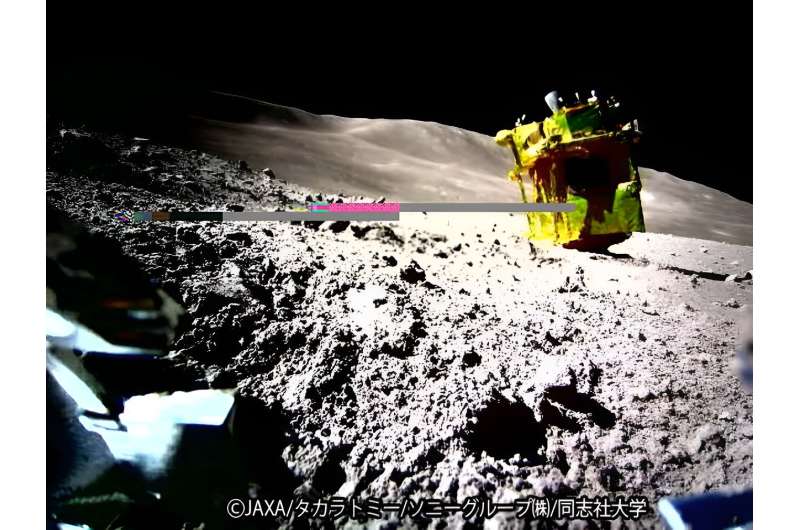
Japan's moon lander woke up after unexpectedly surviving a second frigid, two-week lunar night and transmitted new images back to Earth, the country's space agency said Thursday.
The unmanned Smart Lander for Investigating Moon (SLIM) probe touched down in January, making Japan only the fifth nation to reach the lunar surface without crashing.
But the lightweight spacecraft landed at a wonky angle that left its solar panels facing the wrong way.
The Japan Aerospace Exploration Agency announced the probe's latest surprise awakening in a post on X, formerly Twitter.
"We received a response from SLIM last night and confirmed that SLIM had successfully completed its second overnight," it said.
A black-and-white photo of the rocky surface of a crater accompanied the post on SLIM's official account.
Schools in the path of April's total solar eclipse prepare for a natural teaching moment

Seventh-grade student Henry Cohen bounced side to side in time to the Beatles' "Here Comes the Sun" playing in teacher Nancy Morris' classroom, swinging his arms open and closed across the planets pictured on his T-shirt.
Henry and other classmates at Cleveland's Riverside School were on their feet, dancing during a session of activities tied to April's total solar eclipse. Second-graders invited in for the lessons sat cross-legged on the floor, laughing as they modeled newly decorated eclipse viewing glasses. Dioramas with softball-sized model earths and moons and flashlight "suns" occupied desks and shelves around the room.
Henry said his shirt reflected his love of space, which he called "a cool mystery." The eclipse, he said, "is a one in a million chance and I'm glad I get to be here for it."
For schools in or near the path of totality of the April 8 eclipse, the event has inspired lessons in science, literacy and culture. Some schools also are organizing group viewings for students to experience the awe of daytime darkness and learn about the astronomy behind it together.
Imaging turbulence within solar transients for the first time
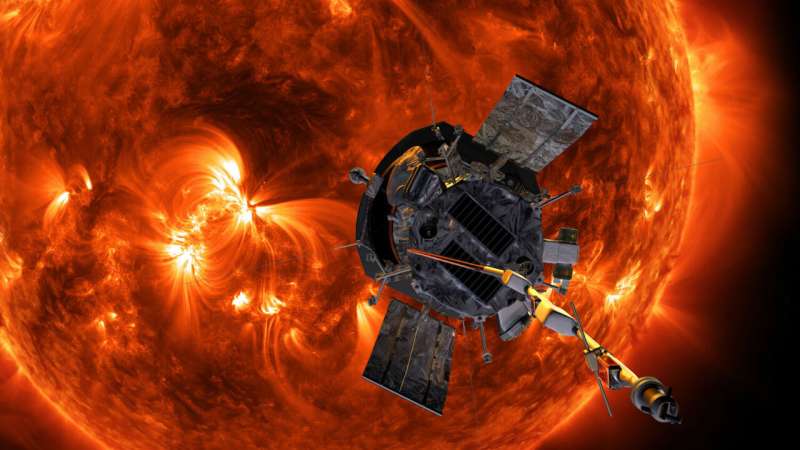
The Wide-field Imager for Parker Solar Probe (WISPR) Science Team, led by the U.S. Naval Research Laboratory (NRL), captured the development of turbulence as a Coronal Mass Ejection (CME) interacted with the ambient solar wind in the circumsolar space. This discovery is reported in the Astrophysical Journal.
Taking advantage of its unique location inside the sun's atmosphere, the NRL-built WISPR telescope on NASA's Parker Solar Probe (PSP) mission, operated by the Johns Hopkins University Applied Physics Laboratory (JHUAPL), captured in unparalleled detail the interaction between a CME and the background ambient solar wind.
To the surprise of the WISPR team, images from one of the telescopes showed what seemed like turbulent eddies, so-called Kelvin-Helmholtz instabilities (KHI). Such structures have been imaged in the terrestrial atmosphere as trains of crescent wave-like clouds and are the results of strong wind shear between the upper and lower levels of the cloud.
Looking at a solar eclipse can be dangerous without eclipse glasses. Here's what to know
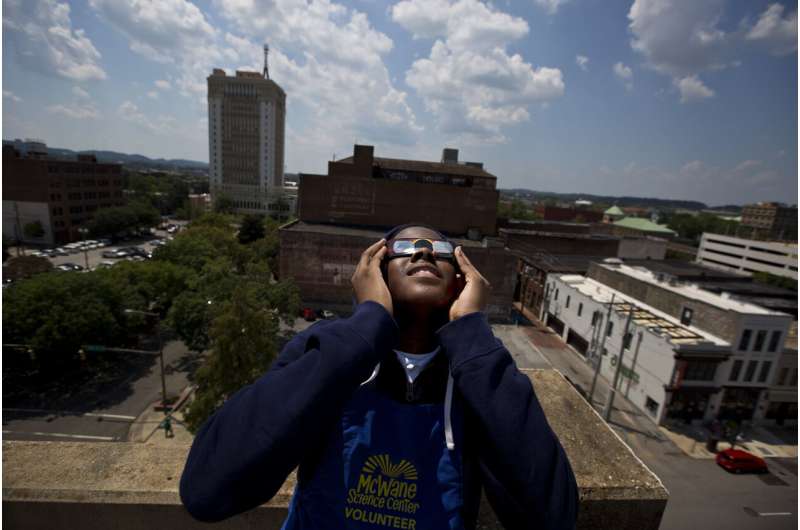
NASA's Europa clipper survives and thrives in 'outer space on Earth'
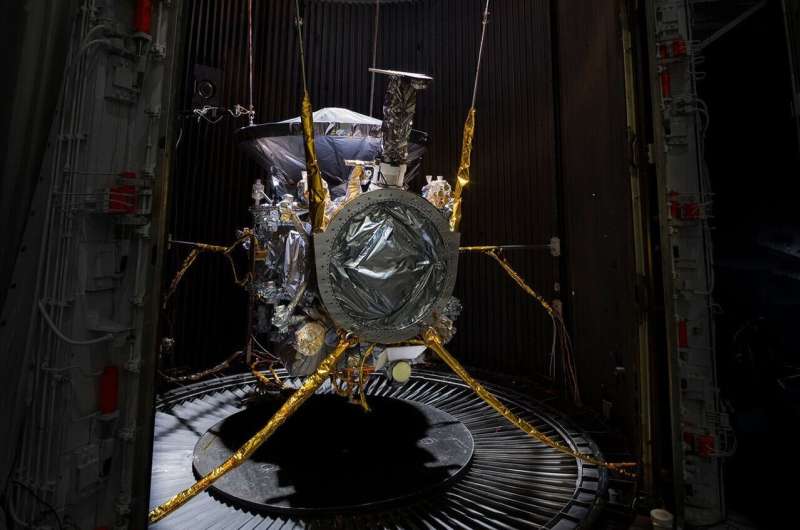
In less than six months, NASA is set to launch Europa Clipper on a 1.6-billion-mile (2.6-billion-kilometer) voyage to Jupiter's ocean moon Europa. From the wild vibrations of the rocket ride to the intense heat and cold of space to the punishing radiation of Jupiter, it will be a journey of extremes. The spacecraft was recently put through a series of hard-core tests at the agency's Jet Propulsion Laboratory in Southern California to ensure it's up to the challenge.
NASA selects first lunar instruments for Artemis astronaut deployment
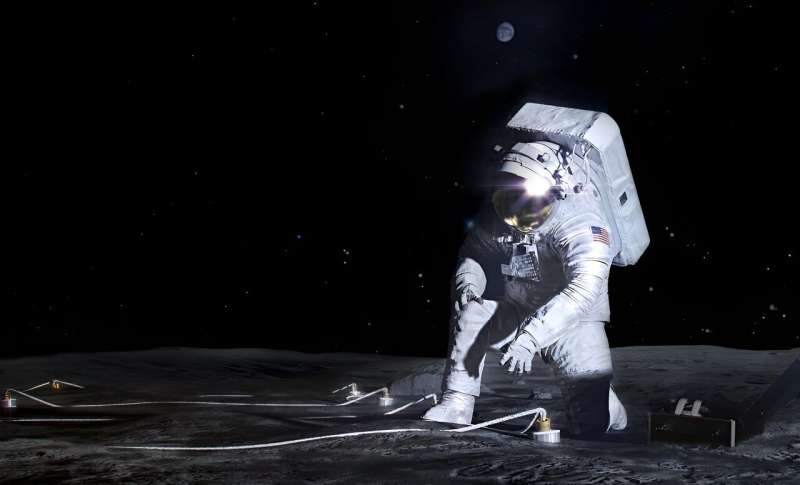
NASA has chosen the first science instruments designed for astronauts to deploy on the surface of the moon during Artemis III. Once installed near the lunar South Pole, the three instruments will collect valuable scientific data about the lunar environment, the lunar interior, and how to sustain a long-duration human presence on the moon, which will help prepare NASA to send astronauts to Mars.
"Artemis marks a bold new era of exploration, where human presence amplifies scientific discovery. With these innovative instruments stationed on the moon's surface, we're embarking on a transformative journey that will kick-start the ability to conduct human-machine teaming—an entirely new way of doing science," said NASA Deputy Administrator Pam Melroy.
"These three deployed instruments were chosen to begin scientific investigations that will address key moon to Mars science objectives."
The instruments will address three Artemis science objectives: understanding planetary processes, understanding the character and origin of lunar polar volatiles, and investigating and mitigating exploration risks.
Watch a real-time map of Starlink satellites orbiting Earth

In an effort to enhance the educational outreach of their Starlink constellation, SpaceX has an interactive global map of their Starlink internet satellites, which provides live coverage of every satellite in orbit around the Earth.
This interactive map comes as SpaceX continues to launch Starlink satellites into orbit on a near-weekly basis with the goal of providing customers around the world with high-speed internet while specifically targeting rural regions of the globe. In 2022, Starlink officially reached all seven continents after Starlink service became available in Antarctica. Additionally, SpaceX announced in 2023 a partnership with T-Mobiel for Starlink to provide mobile coverage, as well.
Within this interactive map, users can opt to see live satellite coverage or rewind and fast-forward their respective orbital speeds. Scrolling your mouse will highlight each satellite, and clicking on them will produce their individual satellite information and orbital trajectory, enabling the user to see if a particular satellite will pass over their location.
